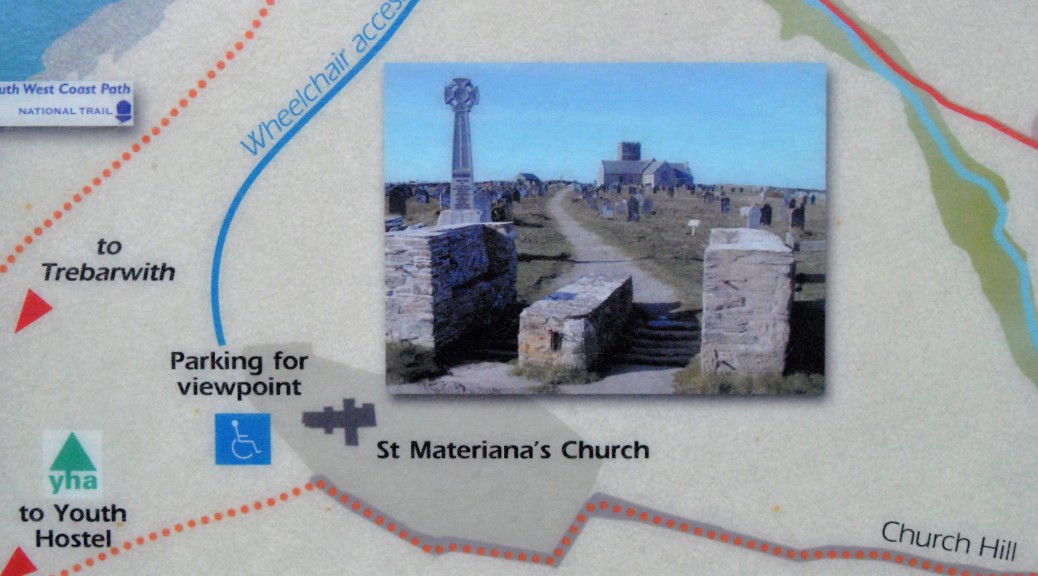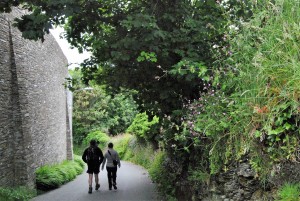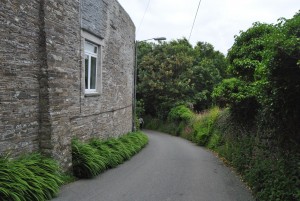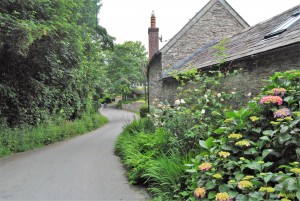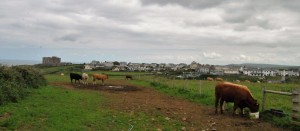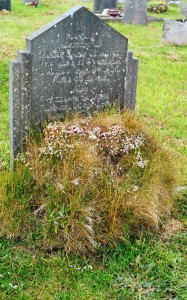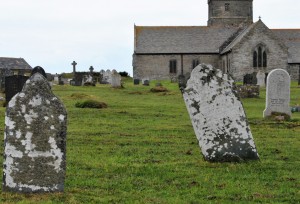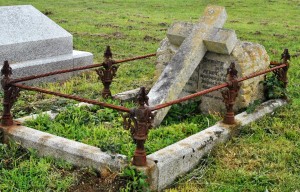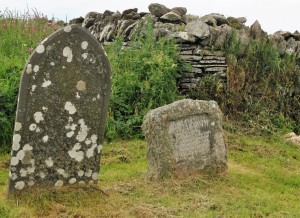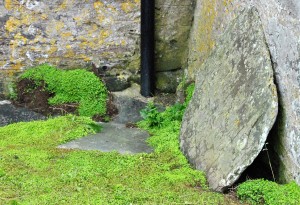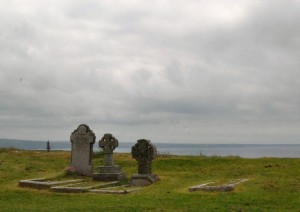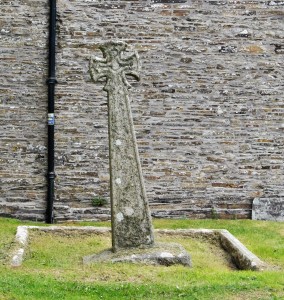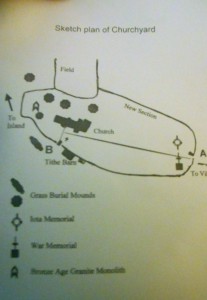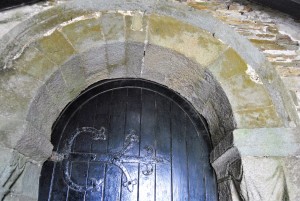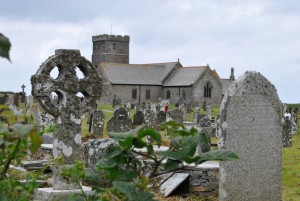THE WEATHER IN CORNWALL HAS NOT BEEN THE GREATEST…but no where near in the other parts of the country so guess my weather luck is still not so bad. Anyway Since I had done Thurs out I spent Friday 6/17 (dismal) at the Inn avoiding the rain and bothering the staff.
But the 18th while not all coming up sunshine did at least not bring any major rain and so I turned my feet down the lane by the Inn and up to the ancient church that sets on the hill and can be seen for miles in any direction.
The road is steep and narrow…but I was on my way.
The Parish Church of Matriana , Tintagel. was built almost entirely as it appears today, in its cruciform shape of nave, chancel and transepts, between the years of 1080 and 1150 in the time of the first Norman eals of Cornwall, Robert of Mortain and his son William.
The window to the left is part of the bar at the Inn…which includes 2 pool tables.
They held Tintagel with other lands of the earldom, and built their castle at Bossiney, some small remains of which of which may still be seen (Bossiney Castle is located east of the village centre, next to the Methodist Chapel. 17 miles south-east of Bude, on the A39-B3263.)
This road is just to the church though there are village abodes along the way.
The next ruler of the area was Earl Reginald, a son of Henry I, who seems to have built a castle on the Island of Tintagel and probably finished the building of the church, perhaps being responsible for the extension of the south transept.
It is unbelievable how beautiful Cornwall is.
The Church is dedicated to St. Materiana, who has been identified with St. Madryn, a princess of Gwent, and who according to tradition, evangelized these parts about 500 A.D., and whose other and chief shrine lay at Minster, a few miles away to the east, where her relics were preserved until the Reformation whch swept all these things away.
A nice view of the village–Camelot Hotel on the left and some inhabitants which I haven’t seen downtown yet.
It seems likely therefore that the present church was built on the site of an oratory served in Celtic days by the monks of Minster and later replaced by a Saxon-style building.
Finally after climbing another hill I’ve reached my destination.
If you consider all this back ground it mean that Christian worship has been continually offered on this spot for 1400 years.
The stones range from very old to much more recent. Since the last time I’d been there they’d mowed it which made it so much easier to get around.
The Church and Churchyard in any town or village is often a source of historical facts and this is certainly true of the St. Materiana Church.
The village may be small but there has been a religious site here for over a thousand years.
Archaeological excavations here and at Castle Island show that there were numerous early Christian burials here during the 5th to 7th centuries AD.
I moved about viewing the broken and braken covered marveling at the long memory of the land.
A dig started by one of the pastors here in 1942 and in greater detail in 1990 showed that there were two “High Status” mounds here and that this had likely had been a post Roman burial site.
and the view from here is spectacular.
The churchyard has two entrances one from the village and the other from those living on the island and residents of surrounding hamlets.
I met a lovely lady who was trying to cut up the remains of a ghost of Christmas Past—-the remains of a tree that had been left to the rear of the church….with the help of her little black dog. We talked for awhile and last I saw her she had decided to do a little sharpening on her clippers.
Both entrances have stone seats and coffin rests.
Again my interest is captured by some small place among the whole.
These seats and rests were vitally important before the advent of cars because most funeral parties had to walk across the cliffs from the hamlets such as Treknow.
At their final resting a view of the sea.
The oldest surviving fragments of tombstone (badly mutilated by stone masons mixing mortar) are that of John Davey and his wife, Jane, dated 1669.
and the variations of the Celtic Cross
There are two other stones dated before 1700..one is John Arthur (1672) and the other John Parson (1694).
Just about competed the circuit of the church.
There are many children’s graves in the churchyard, particularly from the Victorian Era.
I love this one.
In 1931 the churchyard was extended and according to Fr. Blissard-Barnes, the priest at the time, they came across burials in what had been up to that time an open field.
A bit closer look at the very old cross.
This Parish Churchyard was used by all denominations until the Methodist Churches established their own cemetery at Trwarmett in the 1920’s.
That’s it for the Churchyard
The reason for the Methodist changing Churchyards was that they felt this Parish Churchyard far too remote and difficult to approach at that time.
Tomorrow we’ll enter the church itself.
